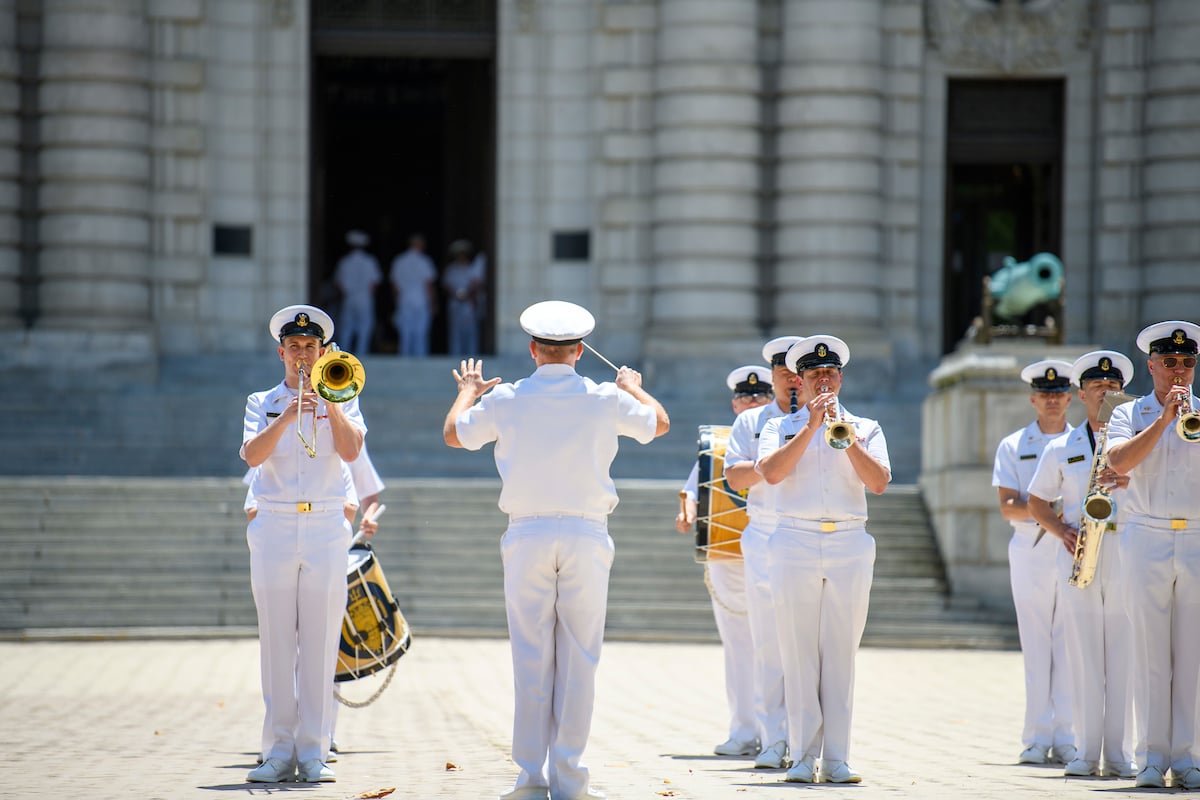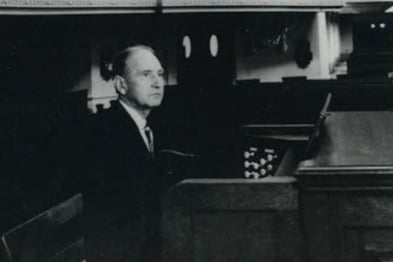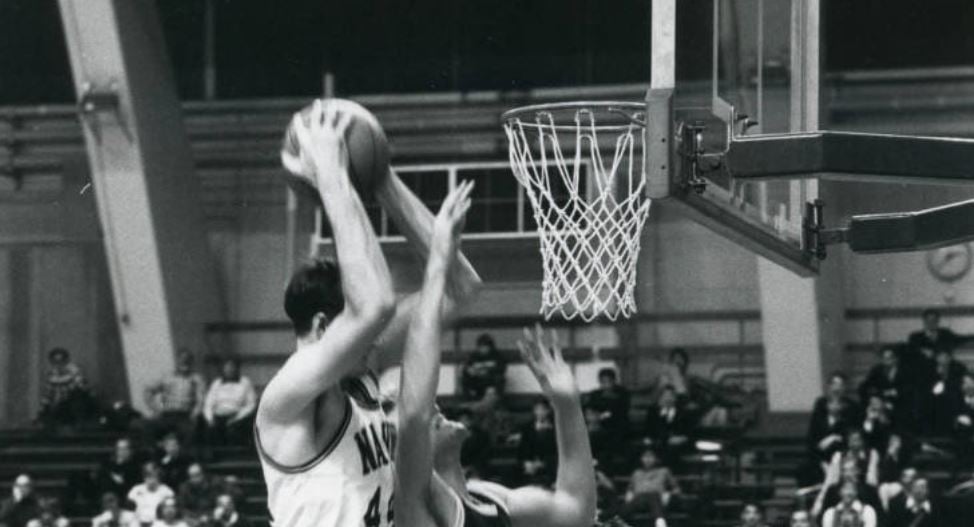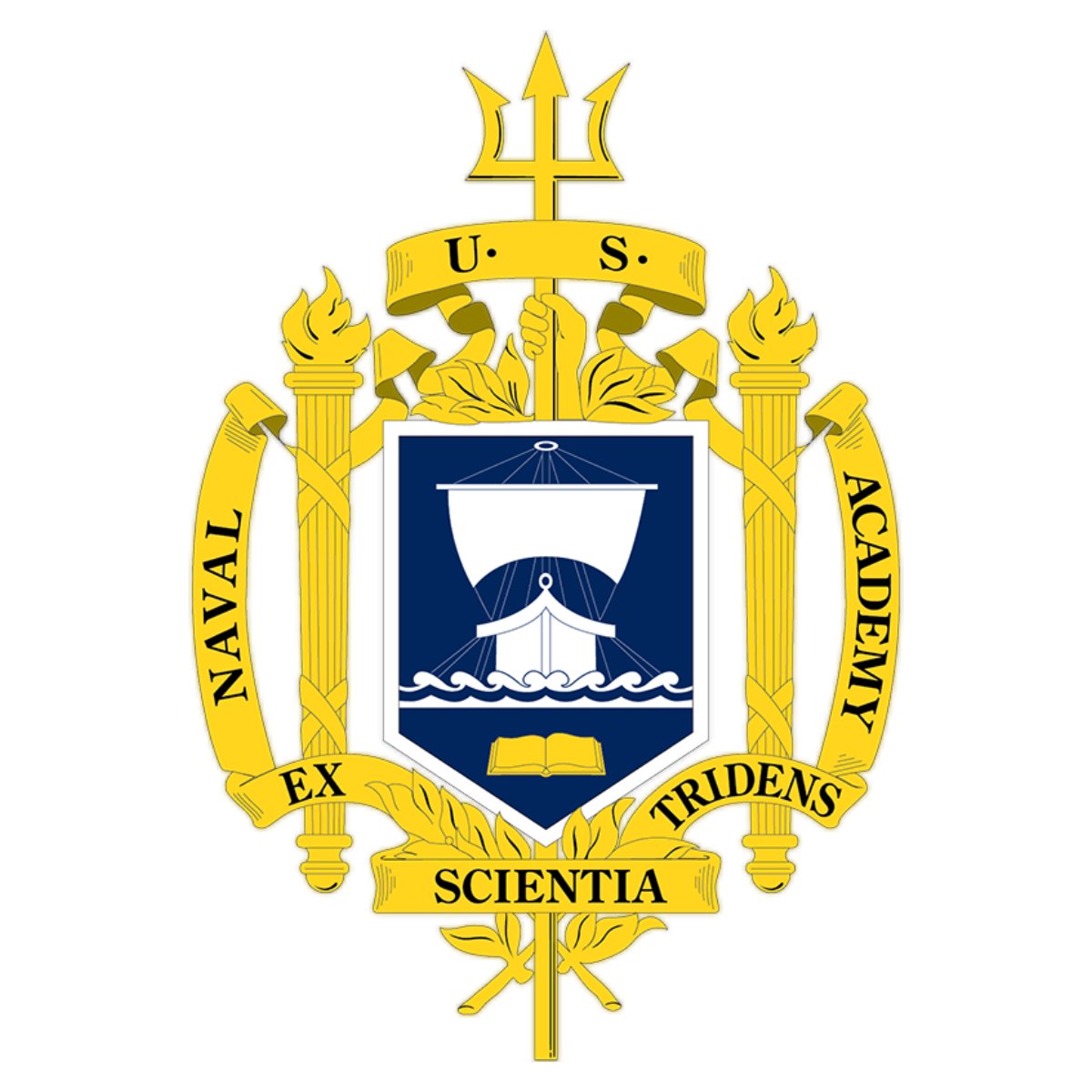
Few would doubt the significance of music and songs in human history and culture. Songs not only provide entertainment, they tell our stories and convey our emotions. Shared musical experiences are also known to facilitate important social bonding.
Music was once a critical element of military organizations. Battlefield music was purposeful in nature. Field musicians played music using bugles and drums to assist with troop movement and battle instruction, while off the battlefield, music was used to celebrate, encourage, and honor the warfighters. Naval music has had an even richer history with its many sea chanteys, frequently sung to pass the days at sea and help make work aboard the ships more enjoyable.
Though the evolution of war fighting and implementation of technology have long since negated the need for martial music and sea chanteys, the tradition of music remains strong within the military, US Navy, and the Naval Academy.

Navy Blue and Gold is the alma mater song of the US Naval Academy. Written in 1923 by Commander Roy de Saussure Horn and J.W. Crosley, it is sung at the end of alumni gatherings and sporting events when the Naval Academy Band is performing. Its use for alumni gatherings is easy to understand given the final and emotional verse,
“Four years together by the Bay,
Where Severn joins the tide,
Then by the Service called away,
We’re scattered far and wide;
But still when two or three shall meet,
And old tales be retold,
From low to highest in the Fleet,
We’ll pledge the Blue and Gold”
The hymn, Eternal Father, Strong to Save, is traditionally associated with military maritime service. Written in 1860 by William Whiting, Psalm 107 and its description of the dangers of the sea inspired the lyrics. Whiting came to believe God controlled the state of the seas and had saved his life when aboard a ship that was almost lost at sea during a violent storm.
In 1879, Lieutenant Commander Charles Jackson Train was the master of the Midshipmen Choir at the Naval Academy and began using Eternal Father, Strong to Save to conclude Divine Services. It eventually became an Academy Chapel and Navy-wide tradition, coming to be known as the Navy Hymn.
The most well-known song associated with the US Naval Academy is the school’s fight song, Anchors Aweigh. Alfred Hart Miles, a Midshipmen First Class, asked Charles Zimmerman, the bandmaster and Music Director for the Naval Academy, to help him compose a football march that was to be dedicated to the Class of 1907. Anchors Aweigh was publicly played for the first time during the Army-Navy game on December 1, 1906 before a crowd of more than 30,000. It was the first win for Navy since 1900.
Its quick-paced melody is readily recognizable, but the lyrics to the US version of Anchors Aweigh have evolved throughout the years. In 1926, Midshipman Royal Lovell from the Class of 1926 added a third verse, but the lyrics were deemed to be too specific to the Naval Academy to be used to represent the broader US Navy. George D. Lottman made additional revisions to the lyrics in 1926, and it was revised again in 1997 by Master Chief Petty Officer of the Navy (MCPON), John Hagan, USN (Ret) to become the version we know today.
To this day, Anchors Aweigh is played at US Naval Academy sporting events and US Navy events worldwide.





